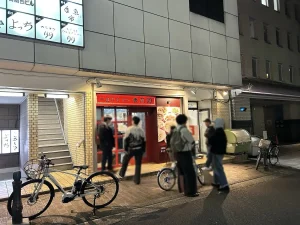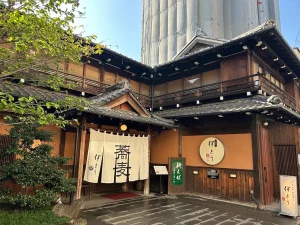This time, I took a walk from Hisaya Odori Park to the Nagoya City Archives. The Nagoya City Archives was built in 1922 as the Nagoya District Court. It now serves as an archive and museum. As of December 2024, admission is free. Visitors can see the Western-style architecture from that era. It is also occasionally used as a filming location for dramas and movies. It was quite interesting, so I decided to write an article about it with some pictures. This area (east of Nagoya Castle) used to be a residential district for mid-ranking samurai. Most of the buildings were destroyed in the air raids, but you can still find traces of the past here and there.
The first thing I noticed was this old Japanese-style house. It seems to have been turned into a school where you can learn crafts, such as using a pottery wheel.
Italian restaurant
Next, I came across this house, which is also likely from before the air raids. It has now been converted into an Italian restaurant. I looked into it, and the dinner courses are quite pricey.
From the north side of Hisaya Odori Park, it takes about 15 minutes to walk to the archives at a leisurely pace while taking photos. When arriving there, the resident stray cat at the archives greeted me.
Right at the entrance, there’s an impressive staircase. This spot is recognizable as a filming location from dramas and movies. Today, there were two groups shooting. The first group seemed to be taking photos for a theater poster, with two women in dresses and a male photographer. The second group was a couple having their wedding photos taken along with their photographer. Right at the entrance, there’s an impressive staircase. This spot is recognizable as a filming location from dramas and movies. Today, there were two groups shooting. The first group seemed to be taking photos for a theater poster, with two women in dresses and a male photographer. The second group was a couple having their wedding photos taken along with their photographer.
To add a bit more detail, it seems this staircase can be reserved for group photoshoots. I found this information on the official website (in Japanese). The two groups were likely those who had made a reservation. When no one else is using it, you’re probably free to take photos as you like. However, since Japan can be somewhat ambiguous about such things, it’s best to observe the situation and act accordingly.
This is where public documents are stored. They can be viewed for free, though they are, of course, in Japanese.
There’s also a café available, though I didn’t use it this time.
I believe this is a reception room. The sofa is quite impressive.
It’s a highly recommended spot as you can explore it for free. If you’re staying in Sakae, you can walk there while enjoying a stroll. It’s also close to Nagoya Castle , so visiting after seeing the castle is a great option. Additionally, nearby are Shumokukan , Futabakan , Kenchuji Temple , and Tokugawaen, making it ideal to take a leisurely walk and visit them all.





















LEAVE A REPLY